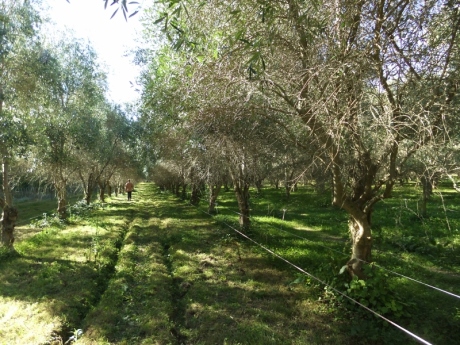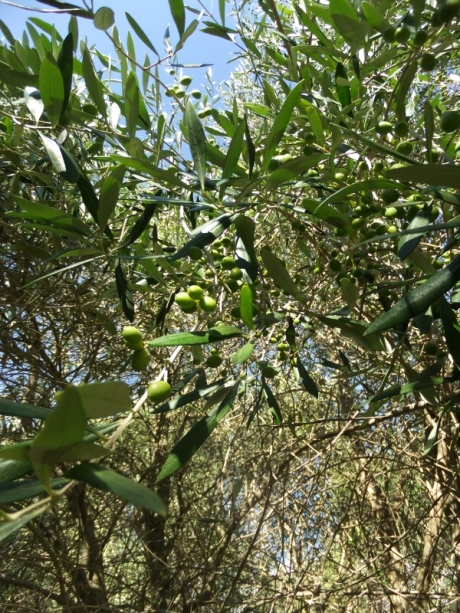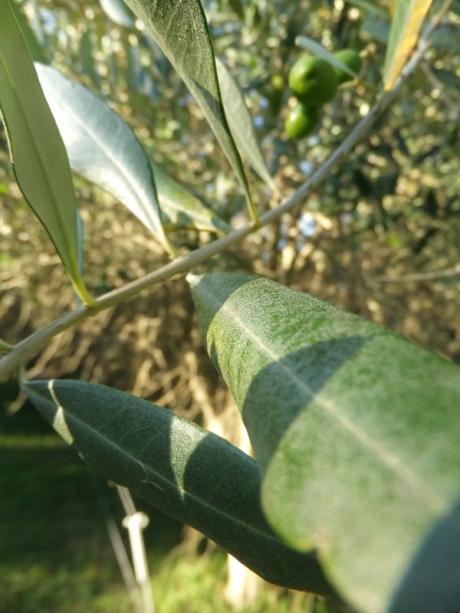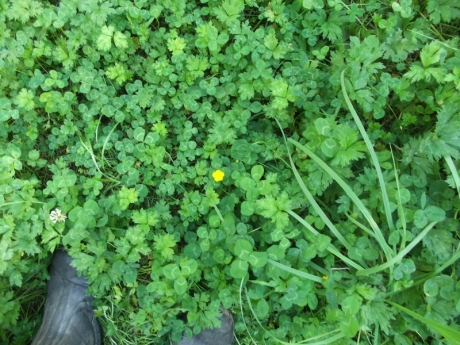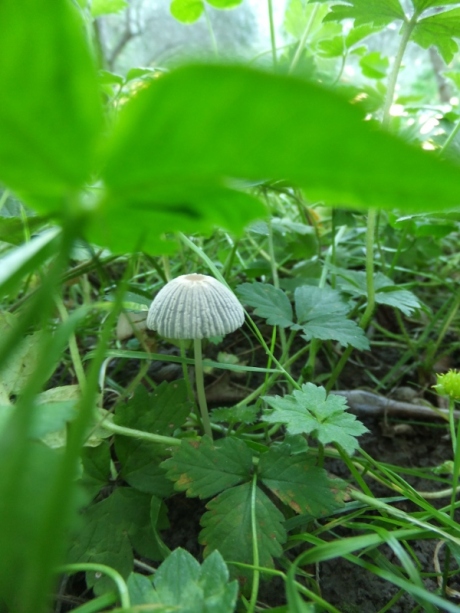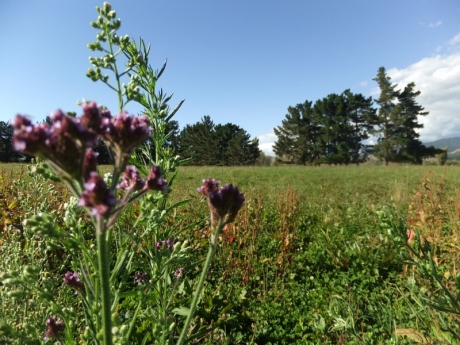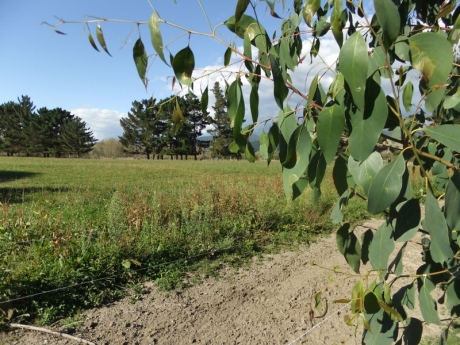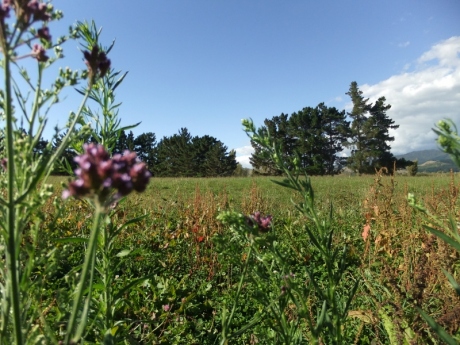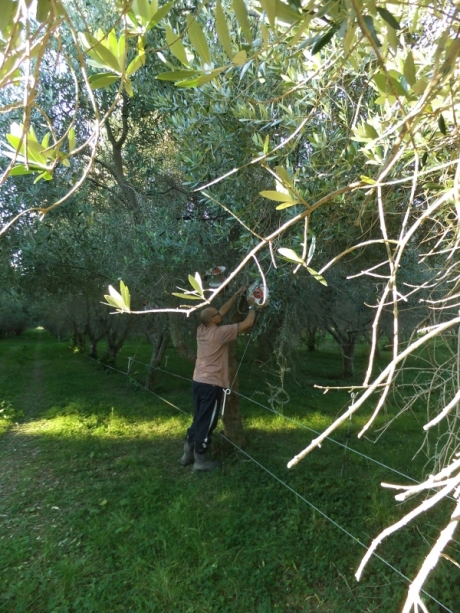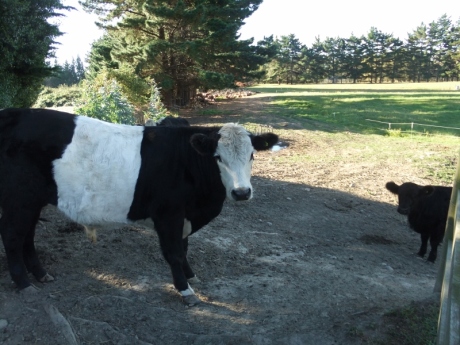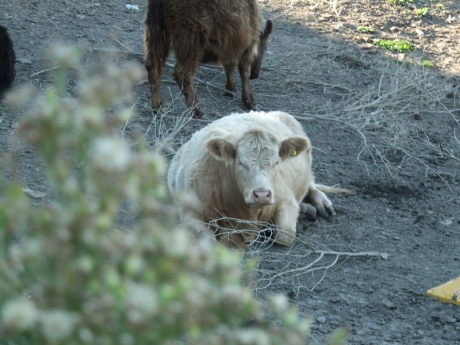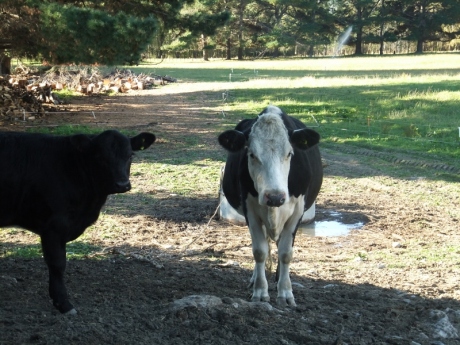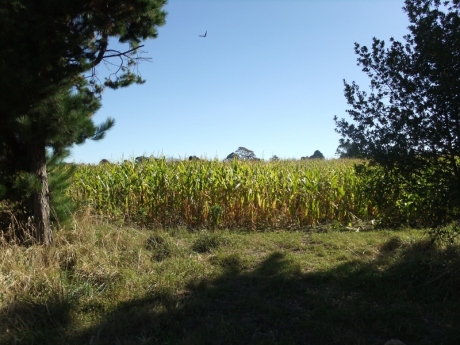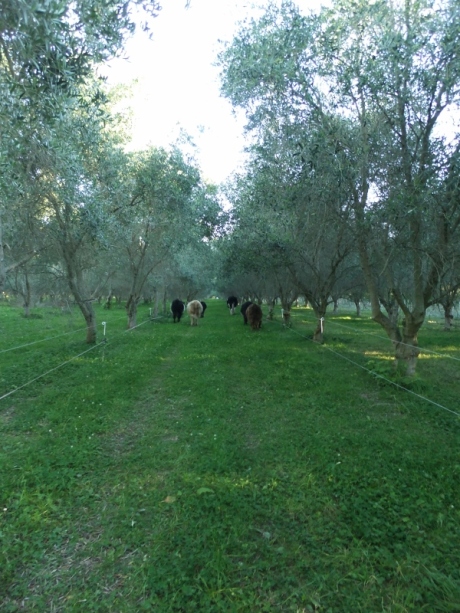Hi all,
This little blog is undergoing a few changes. Join us in a new space at foodlovefood.com
See you there
Hi all,
This little blog is undergoing a few changes. Join us in a new space at foodlovefood.com
See you there
I am very full. I write this almost immediately after eating Sunday night dinner, a meal one shouldn’t miss. Tonight we had beef short rib, slow cooked for 9 hours with red wine, mushrooms, carrots and smoky bacon. The rib was tender and left the clean, sleek bones behind in the slow cooker. We had mashed potatoes made smooth with a hunk of butter and big scoop of chicken stock from a roast during the week. On the side, softened leeks. I watched the leeks slowly steam in butter and oil through the glass lid of a fry pan and the light green colour, like a perfectly ripe avocado, reminded me of a very good leek recipe I have been meaning to share.
The leek is probably my favourite vegetable. A strong declaration perhaps when you consider the variety, the sheer abundance and colour of the vegetable world. But the sleek, white, sturdy and soil-dusted trunk with the green fan tops are my most loved. I cannot pinpoint when the leek became a crucial part of my culinary arsenal, which is likely another measure of favouritism – never a conscious decision but a slow integration until you cannot remember ever cooking without it. I realised I began most meals by dicing a piece of a leek rather than an onion or like the meal tonight, sauteed leeks became as common as steamed broccoli or green beans for the vegetable side. Then much like broccoli once made the leap from a humble side to the star of the show (think roast broccoli), leeks began to do the same.
These leeks do indeed steal the show. They are acidic, bright and sweet. They are like ribbons, almost pasta in texture; wide wraps of tender noodle. With tomatoes and a robust mustard vinaigrette, they seem an entirely different vegetable to the diced and sauteed and the gently cooked leek for soup.
I’ll let the photos do the talking here. It’s late on a Sunday and between the title and the photography clues, I’m sure you get the idea – that there is perhaps more to the leek than we thought.
Roasted Vinaigrette Leeks
This serves as a generous accompanying dish for four people. Goes superbly with chicken, but also with pork chops.
2 leeks
1/4 cup olive oil
2 tablespoon red wine vinegar
2 tablespoon white wine vinegar
2 pinches salt
1 tablespoon Dijon mustard
minced garlic clove (I didn’t use this but just thought it might be a nice addition)
1-2 tomatoes, diced
handful sun-dried (can use no tomato or either all sun-dried or fresh)
Pre-heat oven to 180°C. Cut the white of the leeks in half lengthwise then each length into quarters, lengthwise. Place the leeks into a large oven dish with the chopped tomatoes or sun-dried tomatoes. In a bowl or jug mix the vinaigrette ingredients together and pour over the leeks. Cover with tin foil and bake for 20 minutes until tender. Remove from the oven and remove the tinfoil then gently mix, basting the leeks with the sauce. Place back in the oven with the tinfoil removed for another 15-20 minutes until soft and floppy.
I read a lot of recipes, everyday on blogs, in the newspaper, magazines, websites. Some recipes cement themselves in my conscious, a bookmark so clear and vivid I have no need for an electronic or paper page marker. Sometimes I think there must be a part of my brain solely charged with storing food information. Like a niggle to not forget a dentist appointment or to pay a bill or return a library book, I have a niggle to not forget about this bread I just read about, or to remember a recipe for olive oil cake while Perrin still has a 20 litre container of his family’s press under his kitchen table.
Most recently I read about a biscuit, simple and straightforward enough on paper, five main ingredients, made mostly by hand in one bowl – the ease is appealing. But I only realised this as I made them; they first caught my attention with this summary – biscuits made with wine for dipping in wine! That was all I needed to know.
And really, that’s all you need to know too. There is no story here, although I did start a draft post on a rather overwrought, melodramatic note about earthquakes and high winds and rumbling ground and beautiful Italian biscuits for dunking in wine. But in a bid to keep things real, I’ll focus on the biscuits.
They look delicate but are hardy. They can withstand a good dunking and being carted about town in containers. They are sugar crusted and look like doughnuts with dark, caramelised bottoms and just blushed tops. They contain generous sprinkles of fennel seeds adding the sweet-savoury lilt of aniseed. When they bake, and this is my favourite part, the kitchen smells like baking bread, a yeasty, oily focaccia perhaps. Even after they have cooled, a biscuit brought to your mouth will still smell of yeast and grassy olive oil.
These flavours, a seemingly ill-aligned profile of oil and wine and aniseed, are a bit like chilli and chocolate, maple syrup and bacon, avocado and raspberries, that is, they work. In fact these ciambelline could be the most adaptable biscuits you make – we’re thinking they really could be dipped, dunked and spooned into all manner of things. Hot chocolate and black tea for slow days then stiff drinks for later – a sweet sherry, a dry sherry to compliment the savoury, yeasty tones; cointreau for a bit of zest; eaten with rosé at lunch or a hearty red on a dark night. Creams – perhaps lemon syllabub, or soaked prunes mashed into a thin creme fraiche or perhaps eaten on the side of a panna cotta.
There’s no story today – just biscuits with red wine for dunking in red wine – all you need to remember them by.
Ciambelline al Vino
Recipe from Rachel eats
On the original post no measurements are included in recognition of true Italian cooking style – a ‘feel your way/you’ll know when you see it’ approach. I have included measurements but the recipe should be easy enough to halve or double as you like. Equal quantities of sugar, olive oil and wine are key. Next time I might add a smidgeon of grated lemon zest.
1 cup sugar
1 cup extra virgin olive oil
1 cup wine – red, white or fortified (I used red)
1/2 teaspoon salt
2 tablespoons fennel seeds
flour – I needed close to 5 cups in total
sugar for dusting
In a bowl stir together the sugar, olive oil and wine. Add the salt and fennel seeds then begin to add flour in small measures, mixing at each addition until a soft dough has formed and comes away from the sides.
Turn onto a floured surface and knead lightly for several minutes, adding more flour until the dough is smooth. Cover and rest for at least an hour. Pre-heat oven to 180°C. Line a baking tray with paper.
Break off walnut size pieces and roll between your hands or on the bench until a slim log forms – about 8-10cm. Wrap the ends around to meet and pinch together. If the dough gets too oily, rub your hands with flour. Pour a bit of sugar in a small bowl and place the ciambelline in the sugar until lightly covered. Place the biscuits on the oven tray and bake for 20-25 minutes.
Enjoy
It takes me a while sometimes to recall the good food I ate as a child. If prompted for fond food memories I probably couldn’t tell you a great deal but over time moments from the past come to mind. Sometimes I forget it’s been a fair few years since I was seven and there’s not a hope of me remembering every evening meal and lunchbox packed. Sometimes this thought saddens me, other times, I find it a relief.
But I remember our kitchen, small and pokey with heavy wooden drawers and a smooth white door frame between the kitchen a round wooden table. I can’t remember the frame ever having a door but for me it was a climbing frame as I gripped my way to the top and would perch, my back pressed against one side, my bare feet firmly planted on the other, talking to my mother in the kitchen. I never fell.
This kitchen was eventually expanded, my climbing frame busted down and the room opened out. In the new kitchen and the old one and I suppose the other kitchens in other houses that have come since, the same sort of things happened. Hundreds of sandwiches would have been made in my childhood kitchen, oranges peeled and apples chopped, cereal poured. There would have been chocolate cake and banana cake, lasagne and roast chicken, lamb chops, mashed potatoes, tomato on toast, spaghetti bolognaise or meatballs, sausages – family food.
I remember special occasion foods – the marmalade glaze on the Christmas ham, the time Mum butterflied and roasted lamb and we ate outside in the middle of a summer day, roasting marshmallows in the flames of the brazier on summer nights. I’ll remember for always the avocado halves with slithers of cold smoked salmon we ate for Christmas entrée several years.
We had a few traditions too which I remember fondly. Every Saturday morning all four of us would do the supermarket shopping together. Even now, a family trip to the supermarket seems something to be celebrated, even if it’s just to buy yoghurt and bread. But those Saturday mornings were precious, if not exactly for wandering the aisles, but for what came after – Scottish malt loaf, toasted and slathered in butter. Our supermarket’s bakery section made the loaf, my Dad’s favourite, and often on a Saturday morning the bread would still be warm, the raisins soft and plump and the malty flavour almost caramel, the just overdone sort of caramel with near-savoury tones.
Another tradition: to shyly mock my Dad when he made his long-term go-to dinner, the same dinner he made on his cooking nights when flatting – grilled lamb chops with boiled and buttered potatoes, curried carrots and a green vegetable of some sort. Mock is not the right word, I’m not sure what is really, for we never complain – you cannot go wrong with grilled lamb chops and my Dad’s curried carrots are as good as they come. Perhaps mocking, lovingly, was our way of saying thanks for cooking Dad.
But in my food life, what has been as perennial as the grass, are my mother’s salads. She makes a darn good salad. Her green salad – mixed greens + anything really (feta, red onions, fresh or sun-dried tomatoes, avocado, cucumber, apple…), the house salad, as so aptly named by Food Loves Writing, continues to be good and I’ve been eating this sort of salad for most of my life. Her roast vegetable salad, potato salad, left-over-chicken salad, warm lamb salad, beetroot salad, fruit salad, rice salad, quinoa salad, any salad Mum puts her hand to is fresh and inviting, appealing and nourishing.
I learned from watching and helping Mum make salads that anything, anything in your fruit bowl, pantry or fridge, can contribute to the texture and vitality of a salad. Take this roasted carrot and chickpea salad – a can of chickpeas and the bung up carrots from the market – but together with a little bit of manipulation, cajoling, becomes something else entirely, something quite wonderful.
The carrots, tossed in aromatic spices, were roasted until a dusky orange while chickpeas were toasted lightly in a dry pan, the pattern they formed in the pan reminding me of an open sunflower. Big handfuls of parsley and coriander were chopped up roughly with jagged edges and the kitchen smelled fresh. I drizzled oil and ground salt and pepper over pumpkin seeds and sunflowers, these toasted in the frypan so well they almost didn’t make the salad. A spring onion for crunch and oomph, then a strong, citrus dressing. Everything together, the spices, the herbs, the buttery warmth of spiced roast carrots, the ting of citrus, the salty crunch of seeds and the smooth nutty chickpeas make every bite bright.
This salad is for keeps, like my mother’s.
Roasted Carrot and Chickpea Salad
3 carrots, diced
1 teaspoon curry powder
1 teaspoon ground coriander
1/2 teaspoon cinnamon
2 tablespoons oil
1 can chickpeas (about 400 grams)
1 spring onion, thinly sliced
1 handful fresh coriander and parsley, roughly chopped
1/4 cup sunflower seeds
1/4 cup pumpkin seeds
1 lemon, rind and juice
Pre-heat oven to 180°C. Place the carrots in a bowl with the spices and oil, toss until well combined. Pour onto an oven tray and bake for roughly 25 minutes or until tender.
Heat a frying pan. Drain the chickpeas and rinse well. Place in the hot pan and toss until warmed and slightly toasty. Place the chickpeas in a bowl with the roasted carrots, sliced spring onion and the roughly chopped herbs. Stir lightly.
Mix the seeds with a little oil, salt and pepper, then toast in a hot pan until quivering with heat. Sprinkle the seeds over the chickpeas and carrots.
Zest the lemon into a jar, add the lemon juice with a glug of oil and shake well. Pour over the salad.
Enjoy.
So, it’s July and I’m not entirely sure how that happened. The last time I posted I left on a high note of an optimistic future with new, challenging cooking and baking and bread making. But for the next few days, indeed the whole month of June, rather than buying new flours or attempting three tier cakes I thought about realism and the luxury of changing our minds.
I love how often I can change my mind at the moment. I say at the moment, because while I guess I have been enjoying indecision for most of my life, it feels as if I am on fast-forward to a time when I must make a decision and stick with it. Every week I have a new life plan, a new five year plan, or a new 6-month plan. But this latest plan feels like a keeper, something I can do. So in preparation for a time when I must make a decision and stick with it, I’m going to share it here. After complaining bitterly about university and study for over a year now, I’ve seen the light, so to speak, and had a change of heart. I’m thinking honours, perhaps not next year but definitely soon and looking towards a professional career. It wasn’t so long ago I was writing here of how irregular working hours would likely be the norm for me and trying to find balance (read: steady income) within a writing life. I’m grateful to be able to change my mind, to plan and re-plan my future.
In truth, the last post left me feeling overwhelmed and uninspired, because really, simple and understated is where I draw my inspiration. I like a meal to begin simply, the ingredients understated, perhaps the limp and the lonely from the crisper drawer, but the key is for the dish to be well-seasoned, perfectly cooked, delicious. I guess that has been the premise of cooking for most of history, so why change a good thing?
So enter, an everything pattie, a leftover pattie – spicy pumpkin, bacon and quinoa. Our fridge gets full over the week with little bowls and containers of this and that, a small triangle of pumpkin that someone had the foresight to think would be useful, spring onions beginning to lose their springiness and the last few rashers of dry cured bacon, thick and dark pink in colour. The leftover quinoa had sautéed leeks stirred through it, I found a hunk of chilli and a curly bunch of coriander; people were getting hungry and lunch was coming together.
As I made these patties it never entered my mind the promise I had made to extend my kitchen education. For me it’s almost instinctual to take the leftovers and play around with them – which is what I encourage everyone to do.
I give a rough guide below but really a good pattie can be compressed down to this – a starch or grain (or both), seasoning (chilli, salt, pepper, coriander, or any herb or spice), plus a beaten egg to mould everything together.
Spicy Pumpkin, Bacon and Quinoa Patties
a piece of pumpkin
some cooked quinoa
spring onions, thinly sliced
fresh chilli, thinly sliced
garlic clove, minced
bacon, roughly chopped
a small bunch of coriander or other herb, roughly chopped
1 egg lightly beaten
salt, pepper
Cook the pumpkin until tender – mash. Mix in the quinoa.
In a frying pan heat a splash of oil, add the onions and fry with the garlic and chilli until lightly browned, add to pumpkin and quinoa. Cook the chopped bacon in the frying pan, then stir into the pumpkin mix with the beaten egg, chopped coriander and salt and pepper. If the mixture feels a bit too wet, add a sprinkling of flour or bread crumbs. Mould into patties, heat more oil and lightly fry the patties until browned.
Serve with salad, cold meats, chutney and preserves.
Ever since I made Skye Gyngell’s lemon and poppyseed cake last year I have been meaning to share our standard, go-to lemon cake recipe. It’s so understated that we often forget it about. But the recipe, copied in my mother’s hand into the green binder, shows it came from a 1998 issue of Cuisine magazine. We have been making this cake, and often forgetting about it, for nearly 15 years. You could say we’ve had small lemon cake revelations for 15 years.
This cake is little, almost pathetically so. But it’s light, moist and the lemon flavour is bang on the mark. This cake is of my favourite sort, the no-icing sort. Instead a sugar and lemon juice syrup is poured on the cake fresh from the oven. Like pouring brandy on a hot Christmas cake, this seems the most kindly of gestures for a cake. Like tying a child’s shoelace or wrapping a scarf around a loved one’s neck, it’s a small gesture but it makes a difference. The sugar forms a thin crust on top so there is the slightest crunch when you eat it, and if, like me, you never bother to strain your citrus juice, there are small bursts of lemon flesh scattered across the cake.
I was going to began this post in what I feel follows a common thread amongst blog writers – the constant search for the better, different, more exciting, more challenging recipes, but then so often the family classics prove to be the best. If nothing else, these recipes are dependable. They can often be made in a jiffy, are very forgiving in terms of swapping this for that, and they please a crowd. These are all valid points and no reason at all to discredit the everyday and the dependable, but I’m beginning to see a trend in my kitchen.
I made a crumble last week; rhubarb and apple with a spiced topping packed full of nuts and oats. I like my crumble to be a perfectly suitable substitute for breakfast, the crumble to be more liked baked muesli than dessert. With crumble I feel you can skimp on the sugar as long as the ratio of fruit to crisp is 2:1. You see, I’m intimate with the crumble. But the other dishes that make up a varied, diverse and exciting life? I’m less intimate with those.
There are so many opportunities to progress as a cook. I’m going to start reading cook books again, and actually cook from them. I’m going to experiment with flavours and ingredients.
On that note, I share with you a dead easy lemon cake recipe because, let’s face it, despite promises to be brave and fearless in the kitchen, we all need an easy lemon cake recipe up our sleeves.
Sugar and Lemon Cake
A quick note – I made this recipe with limes instead of lemons, so feel free to play around with the citrus. I didn’t have any milk so used lime juice instead. This worked out fine, except I think the extra fat from the milk helps to keep the cake moist and round out the flavours. Perhaps go half and half, milk and citrus juice, if after a stronger citrus flavour. The recipe below is the original.
125 grams butter
175 grams sugar
2 eggs, beaten
175 grams self raising flour
1 teaspoon baking powder
zest of lemon
1/2 cup milk
Syrup:
juice of 1 lemon
3 tablespoons sugar
Pre-heat oven to 180°C and line a small 20 cm tin. Cream butter and sugar together until pale and creamy. Add the beaten eggs, a little at time, beating after each addition. Fold in the dry ingredients plus the lemon zest and the milk. Pour into prepared tin and bake for 35-45 minutes. (Check after 30 minutes depending on how much extra citrus you added.)
Stir together the sugar and lemon juice for the syrup. Pour over the hot, cooked cake. Leave to cool in tin, however, best served slightly warm.
I found these photos on my phone this week – they’re a bit out of date, taken on a camping trip Perrin and I took in early December last year. It was a great weekend. We were in the middle of nowhere, well that’s what it felt like to me. I couldn’t tell you where was north or south and we drove a winding gravel road through farmland and scrubby bush to get to the little plot of land Perrin’s mother owns. We slept in a tent – boiling, sweating hot one night and absolutely freezing cold the next – and traipsed around in gumboots, bathed in a creek, dug a hole for the toilet – the whole 9 yards.
We had to slash down thigh-high thistles with an axe to navigate our campsite and we built a fire beneath the long, sweeping branches of a willow tree. In one corner of the property was an old, crumbling school house which looked as if a vagrant or two had taken shelter there over the years. The red brick chimney had fallen down so we negotiated the rotten floor boards to ferry bricks across the paddock to build a fire.
We roasted marshmallows on twigs whittled at the end to make a spike and we ate hot, greasy fried egg and bacon sandwiches on the first night. We wrapped potatoes in tin foil and when they were cooked, we broke them open to release the steam and nibble at the hot, fluffy insides. This sounds funny, but even now, 6 months later, I remember the potato tasting just how you imagine a potato to taste, savoury and earthy and clean, before you add the salt, pepper, butter, cheese, stock or herbs.
The second day the drizzle cleared to be fine and hot. We found broken branches suitable for hiking sticks and walked through the nearby pine forest. The forest was filled with light streaming through the trees, giving everything a silvery touch. Wild goats ran along the path in front of us before they would dart up the hillside. There were fox gloves everywhere with slender, bell shaped purple flowers and bowed heads. We found an old boot on a tree stump and I wondered which forest worker had walked out with only one shoe on.
That night, because I’m a lucky lady, Perrin treated me to boil-up. Perrin waded in the creek to find the wild watercress, and we hacked two carrots and more potatoes with Perrin’s hunting knife. If approached like pot-au-feu I can see how boil-up would be great – potatoes, carrots, sausages or chops, and watercress in a broth. Salt would have been nice, but there is something humbling in eating so simply.
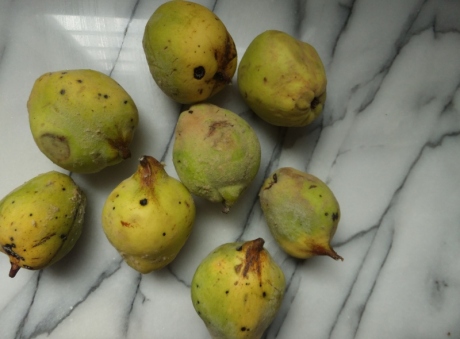 Quick! For those of you in New Zealand/southern hemisphere find some quince before winter truly takes hold. Make quince paste, jam or jelly, scrub the furry fruit, cut, roast and boil away, stock up for a whole winter of cheese boards. If you are like me at the moment this leap into action, this leap into the kitchen will be just the thing to anchor everything in place.
Quick! For those of you in New Zealand/southern hemisphere find some quince before winter truly takes hold. Make quince paste, jam or jelly, scrub the furry fruit, cut, roast and boil away, stock up for a whole winter of cheese boards. If you are like me at the moment this leap into action, this leap into the kitchen will be just the thing to anchor everything in place.

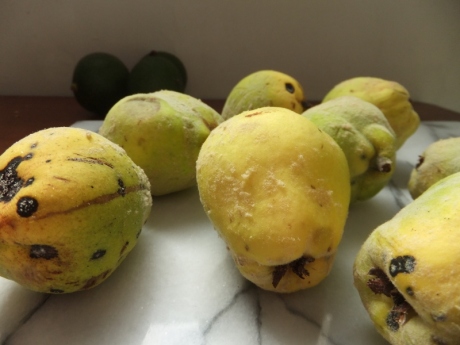 It’s been busy around here: assignments, uni club, assignments, an internship, fundraising sausage sizzle, more assignments and occasionally I have found time to work for actual money which is nice, because you know, the rent doesn’t pay itself. And amongst all the writing about historical print journalism, the political economy of modern news media, the role of a copy-editor and the rules of punctuation, I have helped on photography shoots, defrosted a 5cm wall of ice from my freezer, listened on repeat to an eclectic playlist – Bruce Springsteen, Macklemore, Angus and Julia Stone, the Beach House, Fleetwood Mac.
It’s been busy around here: assignments, uni club, assignments, an internship, fundraising sausage sizzle, more assignments and occasionally I have found time to work for actual money which is nice, because you know, the rent doesn’t pay itself. And amongst all the writing about historical print journalism, the political economy of modern news media, the role of a copy-editor and the rules of punctuation, I have helped on photography shoots, defrosted a 5cm wall of ice from my freezer, listened on repeat to an eclectic playlist – Bruce Springsteen, Macklemore, Angus and Julia Stone, the Beach House, Fleetwood Mac.
I’ve had a freezing weekend away in Christchurch, and have been reading up on HTML code, because now seems as good a time as any to become a code geek. I have been reading short stories and essays by and on Katherine Mansfield and I have been devouring anything written by Joan Didion, and God could these women write! I have eaten more kebabs, pizza slices and take-out sushi in the past couple of weeks than I’d like to admit and between our flat and Georgie being at home in Wellington for over a week, I have shared more bottles of wine than I’d like to admit.

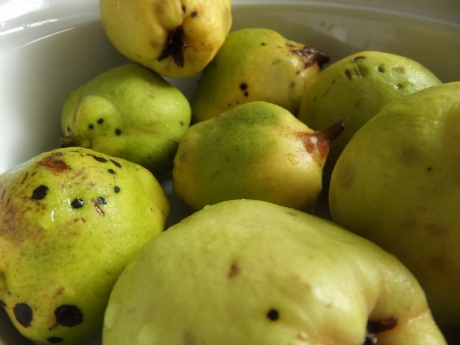 What I’m leading up to here is that the days have been full and apart from the people and the wine and the great literature I am growing tired of this year. My parents commented the other day about how fast the year is going, can we believe we are a third through 2013 already? I said quite loudly and with a melodramatic exhale of breath, “Thank God!” I feel quite indifferent to the routines of going to class, sitting in a lecture hall, moving from one computer desk to another, moving from one essay writing assignment to another. These feelings are not new or particular to only myself – I think all students feel this as uni wraps up and new projects seem within reach.
What I’m leading up to here is that the days have been full and apart from the people and the wine and the great literature I am growing tired of this year. My parents commented the other day about how fast the year is going, can we believe we are a third through 2013 already? I said quite loudly and with a melodramatic exhale of breath, “Thank God!” I feel quite indifferent to the routines of going to class, sitting in a lecture hall, moving from one computer desk to another, moving from one essay writing assignment to another. These feelings are not new or particular to only myself – I think all students feel this as uni wraps up and new projects seem within reach.
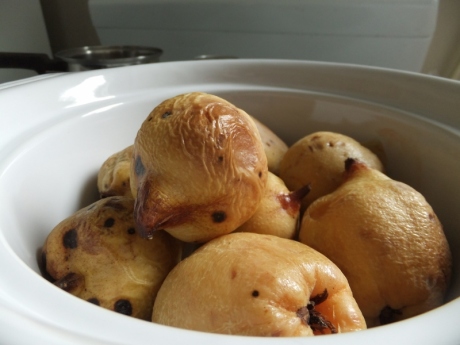
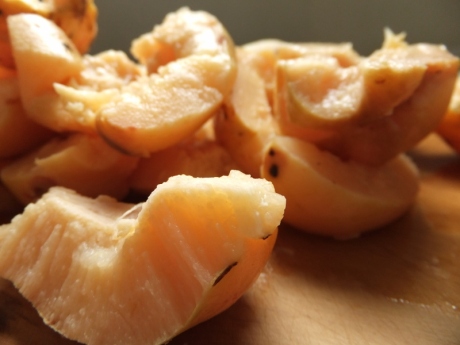 Unfortunately these feelings of indifference have weedled their way into the kitchen, hence the take-out sushi, kebabs and pizza. But food – good food, real food – has an ability to make us take notice. I’ve written this before, of food’s power to redirect our attention and our priorities.
Unfortunately these feelings of indifference have weedled their way into the kitchen, hence the take-out sushi, kebabs and pizza. But food – good food, real food – has an ability to make us take notice. I’ve written this before, of food’s power to redirect our attention and our priorities.

 Autumn produce has been worthy of attention. Fresh figs, feijoas, quince, the most crisp, tart cooking apples and sweet, juicy eating apples. Local pears, the flesh the softest I have ever eaten and new golden kiwifruit, rich and mellow, quite different to their acidic, green cousins. The last of my summer tomatoes – green and peppery, and four of the most beautiful avocados, so oily and rich, from the tree at the olive grove. In the northern hemisphere people are heralding the arrival of spring produce in all its green glory, but I think we simply like the change in seasons, the chance to honour something new.
Autumn produce has been worthy of attention. Fresh figs, feijoas, quince, the most crisp, tart cooking apples and sweet, juicy eating apples. Local pears, the flesh the softest I have ever eaten and new golden kiwifruit, rich and mellow, quite different to their acidic, green cousins. The last of my summer tomatoes – green and peppery, and four of the most beautiful avocados, so oily and rich, from the tree at the olive grove. In the northern hemisphere people are heralding the arrival of spring produce in all its green glory, but I think we simply like the change in seasons, the chance to honour something new.

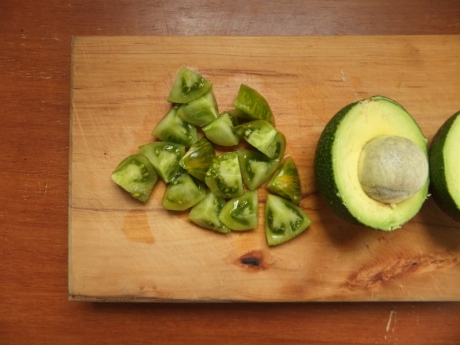 This autumn quince proved to be most interesting to cook with. It seems I haven’t learned that raw quince is very sour and shouldn’t be consumed in its raw state, no matter how fragrant it smells or buttercup yellow it is. But cooked into a thick, dark pink paste the quince becomes sweet, the fragrance intensifies, like roses and apples. My kitchen smelled wonderful. Quince paste is a relatively time consuming task but on the day I made it there seemed to be nothing more remedial than standing at the bench peeling the skins from the roasted fruit or stirring gently at the stove.
This autumn quince proved to be most interesting to cook with. It seems I haven’t learned that raw quince is very sour and shouldn’t be consumed in its raw state, no matter how fragrant it smells or buttercup yellow it is. But cooked into a thick, dark pink paste the quince becomes sweet, the fragrance intensifies, like roses and apples. My kitchen smelled wonderful. Quince paste is a relatively time consuming task but on the day I made it there seemed to be nothing more remedial than standing at the bench peeling the skins from the roasted fruit or stirring gently at the stove.
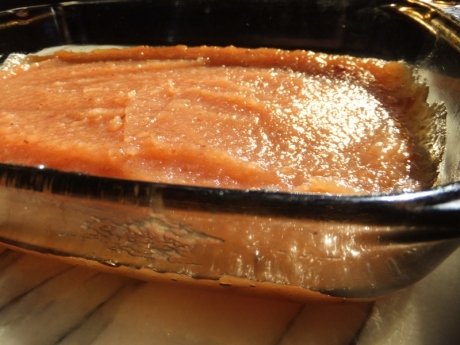
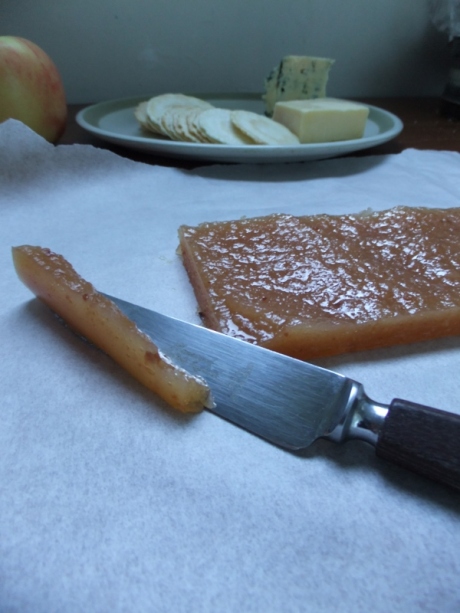
 Perrin gave me the quince, passed on to him from a kindly fruit and vegetable shop owner up the road. The figs, scavenged from my neighbour’s tree (who perhaps does not realise figs are $22/kg, never picks them and let’s them ripen for the birds) were eaten in greedy, mischievous lust, ripped open to expose their pink beaded insides. While I stood in my kitchen stirring fruit paste I began to think about scavenged fruit, free fruit and reasons why it seems to feel special, treasured, honoured. Can we appreciate the downy skins of a quince or the crispness of an apple or the spurting juicy seeds of a tomato more when they come from somewhere we know? I don’t mean the supermarket we know, but if we can put a face, a place, a time, a field or a road to food I’m sure it’s likely to be more significant to the consumer and treated with all the respect it deserves.
Perrin gave me the quince, passed on to him from a kindly fruit and vegetable shop owner up the road. The figs, scavenged from my neighbour’s tree (who perhaps does not realise figs are $22/kg, never picks them and let’s them ripen for the birds) were eaten in greedy, mischievous lust, ripped open to expose their pink beaded insides. While I stood in my kitchen stirring fruit paste I began to think about scavenged fruit, free fruit and reasons why it seems to feel special, treasured, honoured. Can we appreciate the downy skins of a quince or the crispness of an apple or the spurting juicy seeds of a tomato more when they come from somewhere we know? I don’t mean the supermarket we know, but if we can put a face, a place, a time, a field or a road to food I’m sure it’s likely to be more significant to the consumer and treated with all the respect it deserves.
So these are thoughts that occupy my mind at the moment – an argument for local, community eating. These thoughts and days spent at the stove are valuable and interesting. I make room for them, prioritise them, amongst everything else.
Lois Daish’s Quince Paste (Penny Porritt’s Quince Paste)
I love my Lois Daish book. Every time I look through it I vow to make a blog project out of it – to cook my way through the year with Lois Daish. As for Penny Porritt, I believe she was a Listener columnist at some point, but anyway Daish’s recipe comes from her.
Take your quince and scrub gently to remove the down. Place the whole fruit in a casserole pot or roasting dish and pour over 1/2 cup of water. Cover with a lid or tightly wrapped tin foil and bake at 150°C for 2-3 hours (closer to 3, I would say) until the fruit is pink and tender. Remove from the oven and when cool enough to handle, scrape off the skins, cut each quince in half and pull out the core.
Weigh the fruit and then purée in a blender or pass through a mouli. Place the pulp in a pot and measure out enough sugar to equal 3/4 the weight of the prepared quince. Add to the pan of purée and heat gently, stirring occasionally. Cook gently for about 45 minutes, stirring frequently with a wooden spoon. The paste is ready when it is so thick that you can drag a wooden spoon through the mix and still see the bottom of the pot.
Lightly oil a shallow heatproof container – I used a similar sized dish that I would make a brownie or slice in. Cool the quince paste for a few minutes and then scrape into the dish. Smooth the top and put somewhere warm and dry for a day or two (I left it in my switched off oven). Once dried out, cut the paste into blocks, wrap in baking paper and store in a plastic container in the fridge.
A few weekends ago over Easter there was a lot of food made and consumed in my kitchen, but really it wasn’t all fun and games. For most of the weekend I sat at the big dining table in my parents’ house writing a rather dry essay on 16th and 17th century news journalism. I squinted at texts written in barely discernible English where a S could have been a R or a F and stories told of malformed pigs and blood raining from the sky. No matter what you think of modern news journalism, I am thankful for the progress we have made.
My sister flew home for part of the weekend, setting up her laptop at the other end of the table, books and papers and computer cords filling the gap between us. There we sat, just like that, for most of the weekend, she plugging away on a lab report about grape disease and I trying to draw parallels between post-medieval and 21st century journalism.
And yet, in the midst of all this was food. Food seemed to transcend our immediate reality of assignments and university and settle us in an all the more ‘real’ reality – simply the need to be feed and nourished and sustained.
On Friday before Georgie flew home Perrin and I hosted a dinner party. I made an Easter cake – the simplest cake if ever there was one – no need for beaters or excessive creaming, but the cake rose perfectly to a smooth, plainly flavoured, moist Madeira style cake. We made braised lamb with feta, potatoes and tomatoes; Perrin cut, oiled and spiced up pita pockets into crisps while I whizzed hummus together. We set a rice pilaf to cook later in the evening with slivered almonds and just-moist sultanas, counting out loud the (10) seconds of sizzle time of the cinnamon stick. There was a stellar quinoa salad made by Francesca and a banana cake from Catherine. My house was filled with noise – music, conversation, the scrape of chairs, the clink of eight glasses when it came time to toast – lovely really, for the rest of the weekend all we would hear is the tap-tap of a laptop keyboard. (And I confess this song played too loudly and danced to wildly when the prospect of typing another word seemed all too much.)
I picked Georgie up early on Easter Sunday and we drove straight to the market. We did away with the fruit bowl basics instead buying leeks – the white as long and as thick as my forearm, limes – an absolute steal at only $8/kilo, an eggplant with beautiful, high-gloss skin, and fire-truck red baby tomatoes. We bought packets of hot cross buns and returned home to eat them toasted and dripping with butter.
We had avocados smashed on toast with a runny yolk fried egg for lunch. Coffee and hot cross buns always dripping with butter continued all weekend – how else does Easter play out? In the evening we sat in the kitchen, our backs defiantly to the table covered with paper, and we drank Merlot. We picked the potatoes from the leftover lamb, reserving them to slice finely and fry the next day, but the lamb, as stews always are, was better on day two.
On weekends like this one where what needs to be done is minimal – fill X amount of pages with X amount of words – yet the task is decidedly time consuming and complex, food is both a welcome distraction and a boost in productivity. I find I work best when part of my mind can freely think about lunch or dinner, when a meal plan begins to form and I can fry potatoes to golden crispy, lay on a spinach wrap spread with harissa and mayonnaise and top with spindly mesclun leaves. Or for dinner: thick, pink pork chops covered in salt and cooked on the pan and leeks braised in white wine, dijon mustard and vinegar to become tender ribbons, sharp and sweet. The creativity of cooking livens my senses and exercises my brain.
Georgie made a lime tart – freshly squeezed limes – what a scent! And then came the eggplant, young and slender, of the most beautiful colour and weighty in my hand. I had a friend at school who loved the eggplant purely because she thought it would make a pleasing thwack when pelted at a wall, or a person, depending on her mood. (The same went for capsicums.) I strangely think about this every time I cut open a raw eggplant and hear the satisfying hiss and thud of the blade through the dense flesh. I resisted the urge to throw food at my walls and instead I made baba ganouj from the Moosewood Cookbook.
There has already been a lot said about the Moosewood Cookbook, about the hand written recipes and hand drawn illustrations, about the beginning of a food movement and about the long reigning success of the book, so I’ll keep this brief. My mother has had a copy of the book for as long as I can remember but I never understood the significance of Mollie Katzen’s Moosewood Cookbook until I began to read about the cult-like following it has.
The baba ganouj is simple and lovely as far as baba ganouj go. It’s creamy and oily, there is a richness but also a wonderful complexity of flavour: garlic and lemon, a smoky bitterness from the eggplant and a subtle nutty hint from the tahini. But roasting whole eggplants, their skins turning dark chocolate in colour and gorgeously wrinkly like that of a ripe passionfruit, and the burnt oil, smoky smell that filled my kitchen probably contributed to more words being written about early journalism and more pages being filled than any other kitchen activity all that long weekend.
Baba Ganouj from the Moosewood Cookbook
The only change I made to this recipe was the addition of a second roasted eggplant. Also, I do think this recipe benefits from resting time before serving.
2 tablespoons oil (for the baking sheet)
2 medium to large eggplants
2 cloves of garlic, minced
1/4 cup fresh lemon juice
1/4 cup tahini
1/2 teaspoon salt
black pepper or cayenne (I used a pinch of cayenne)
olive oil and freshly chopped parsley or coriander for the top
Pre-heat oven to 180°C. Lightly oil a baking tray.
Slice the eggplants in half lengthwise and place face down on the baking tray. Bake for 30 minutes or until very tender. Remove from oven and leave to cool.
Scoop out the flesh of the eggplant and discard the skins. Place the pulp in a food processor with the garlic, lemon juice, tahini and salt and pepper. Purée until desired consistency – I think it’s best with a few chunks of eggplant.
Transfer to a serving bowl, cover and chill. Before serving drizzle the top with oil and scatter over your choice of herbs.
A few weeks ago Perrin and I spent our Friday night moving stock at his mother’s olive grove – winding and unwinding electric fence cord, moving and re-positioning fencing rods in between rows of olive trees. We wore old farming clothes and gumboots and trod through cow manure. It was fun. I took my camera.
Recently, I’ve been thinking a fair bit about (semi) rural living – of giving up my town mouse life and moving to a smaller community where houses are on big sections perfect for rambling vegetable gardens. I’d like to have a lemon tree and own a lawn mower.
I thought about this while I rubbed blisters into my fingers from coiling fence cord and walked into well-woven spider webs, and later when I pulled a small nest of twigs from my hair. Could rural living become my everyday and not just a funny way to spend a Friday night? Sarah from The Yellow House wrote an interesting post about the value of rural living, of finding balance between city and country.
